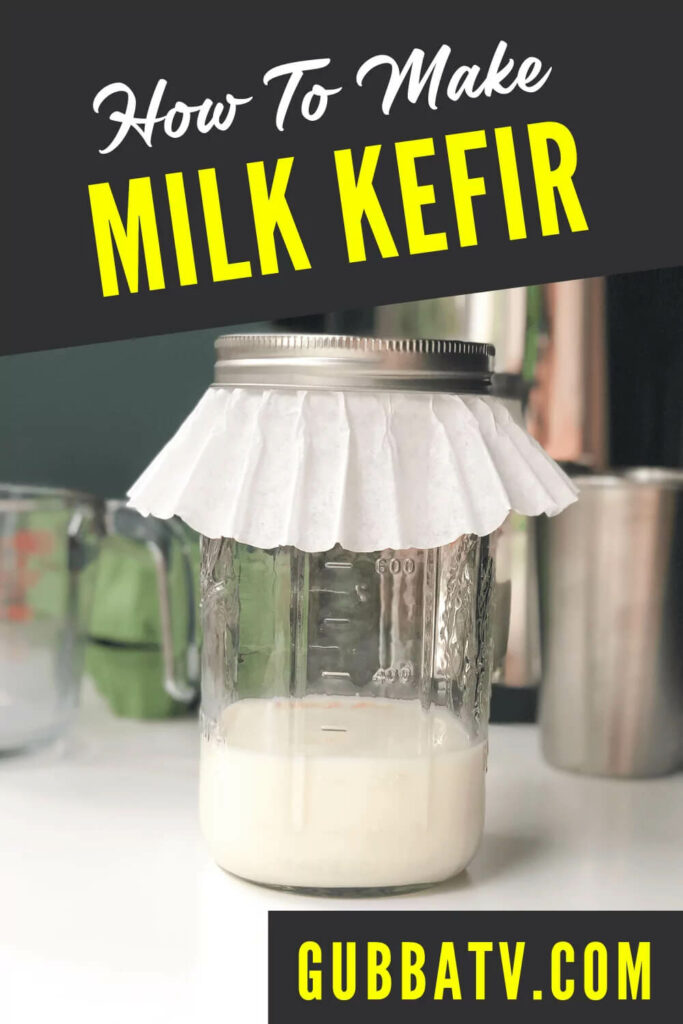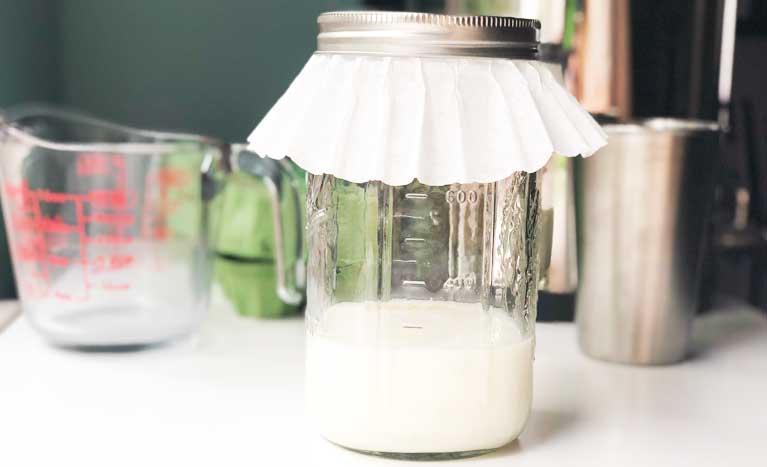If you watch my streams (at twitch.tv/gubbatv), then you’ve heard me talking about my latest adventure: making a probiotic drink by fermenting milk, otherwise known as “milk kefir.”
My community gave me a hard time because drinking fermented milk sounds absolutely wild lol. They made comments like:
“I’ve had my milk in the fridge for a few weeks and it smells funny. Do I have milk kefir?”
And
“Too much fermented milk and you’re not going to be able to walk straight.”
This made me laugh because fermented milk does sound stinky and gross, but milk kefir is far from the chunky, stinky milk that’s rotting in the back of your fridge. Milk kefir has a texture thicker than milk but more liquid than yogurt—it isn’t chunky; rather, it's smooth and creamy, and the flavor is tangy, tart, and sharp.
Milk kefir differs from yogurt because both bacteria and yeast are used to ferment milk in kefir, but yogurt only uses bacteria to ferment milk. Kefir is also fermented at room temperature, while yogurt is generally fermented at warmer than room temperature. I allow my kefir to ferment on my kitchen counter for 24 hours for incredible, tasty success!
Kefir has been around for thousands of years, but it's rare in our modern way of life. I plan to revitalize this healthy drink, and incorporate it into my everyday life. The “grains” used as the starter culture for kefir are a mix of bacteria and yeast, and they multiply as you continue making kefir. These kefir grains can be passed down through family generations, or if you get too much you can give it to friends—similar to sourdough starter. All you need is the starter grains, milk, and jars, and you have perpetual kefir for the rest of your life. I wish someone had passed down a sourdough starter or milk kefir in my family!
There are many health benefits to kefir. People who are lactose-intolerant can enjoy the benefits because kefir is surprisingly low in lactose. Most of the lactose ferments to lactic acid, making it more tolerable than milk. Kefir aids digestion and boosts your immune system by introducing good bacteria into your gut and rebuilding or strengthening your gut biome. Potassium and calcium are abundant in kefir, so this is an easy way to get your daily dose of these two minerals.
As you continue making and consuming kefir, the kefir grains you use will multiply. You can throw away the excess, compost it, feed it to livestock, or gift it away. As with sourdough discard in sourdough starter, there are options for the extra!
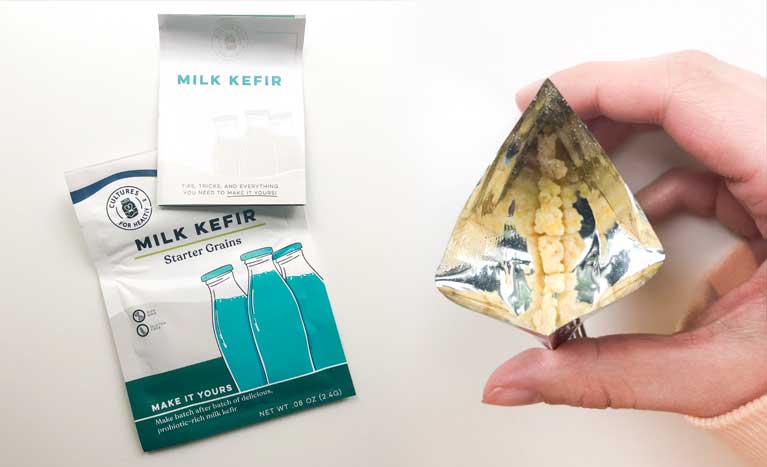
It's incredibly easy to make kefir at home. I did it; you can too! Get a milk kefir starter culture. I used this one. The packet should come with simple instructions but these steps worked for me:
Tools you will need:
- Milk Kefir grains
- 32. oz Mason jar (I prefer wide mouth)
- Mesh strainer
- Coffee filter
- Kitchen bowls
- Wooden spoon
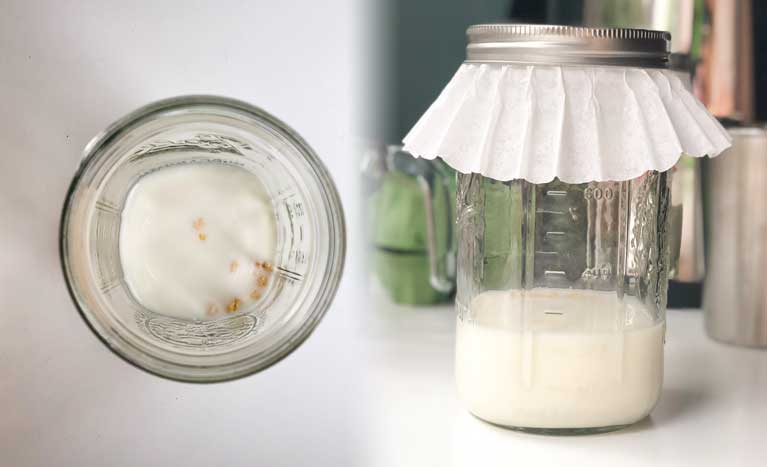
1) Pour 1 cup of cold whole milk (not ultra-pasteurized, but pasteurized only) into a clean 1-quart mason jar.
Drop your starter grains into the milk and cover with a coffee filter and screw on jar top. Allow it to sit for 24 hours until it thickens. If it doesn't thicken, repeat this step until it does. Strain the grains from the milk using a mesh strainer and wooden spoon. Add the grains into another cold cup of milk. I had to repeat this step 3 times to get my first batch of kefir.

2) After your starter kefir grains have awakened and are fermenting the milk, causing it to thicken and turn into kefir, strain the grains from the milk.
This time, add in 1 1/2 cups of milk—adding an additional 1/2 cup milk each cycle until you are at 4 cups of milk being adding each time.
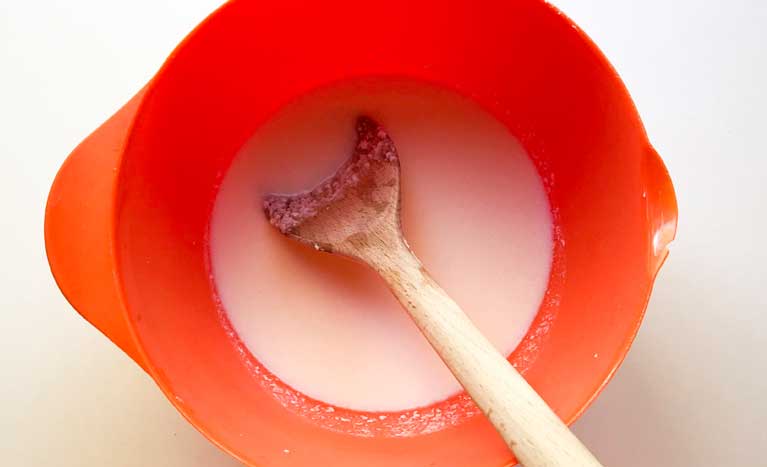
3) Enjoy in smoothies, plain, or with granola and fruit!
Kefir is like a drinkable yogurt, but with an added boost of health benefits. I prefer the taste of plain kefir over the taste of plain yogurt and I don’t mind the added strains of healthy bacteria I get from Kefir as well. If you don’t want to commit to making your own kefir, you can purchase a bottle of flavored or plain kefir from a health food store and try it out.
